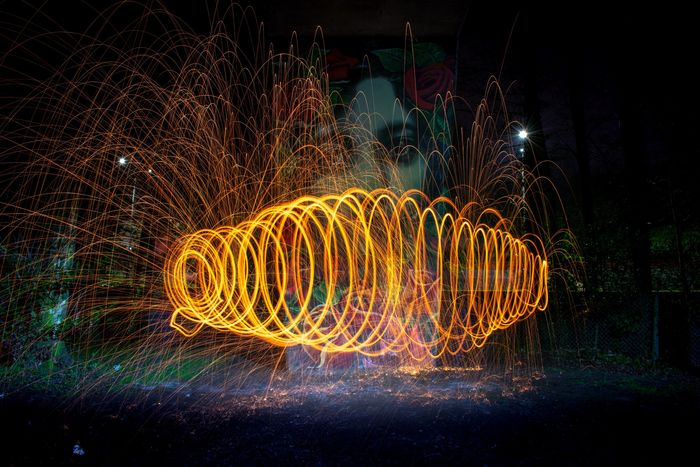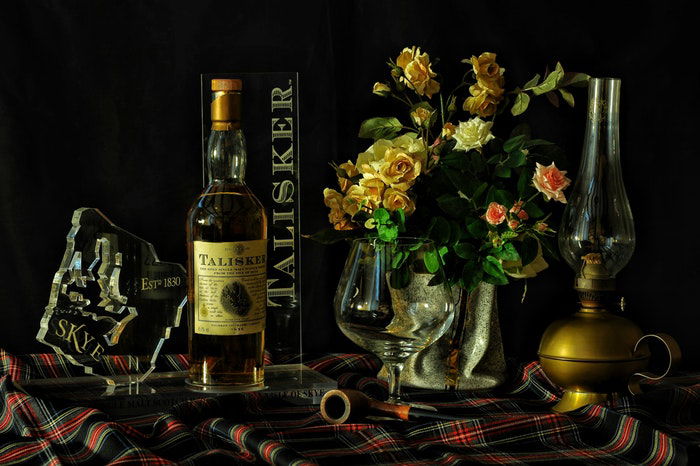14 DIY Flat Lay Background Ideas for Awesome Photos
Flat lay photography is becoming ever more popular. It’s a great way to beautify your social media content. Now, many people are using flat lays for marketing and commercial photography.
If flat lays are something you’re excited about, we have some great ideas so you can find the perfect flat lay background. You can experiment with materials and combinations to spice up your Instagram content.
14 Awesome DIY Flat Lay Backgrounds
Some flat lays photos look so intricately designed you might think they’re impossible to replicate. You might think you don’t have the correct surfaces or the right equipment. But that’s not true.
There are some tricks, hacks, and workarounds we can help you with. You won’t need to move into a new house with marble surfaces and treated wooden floors. All you need is a DIY state of mind.
As for cameras, you don’t need anything fancy. DSLRs and mirrorless cameras are great. But a smartphone camera works perfectly for flat lay photography.
Here are our tips and tricks for awesome DIY flat lay backgrounds.
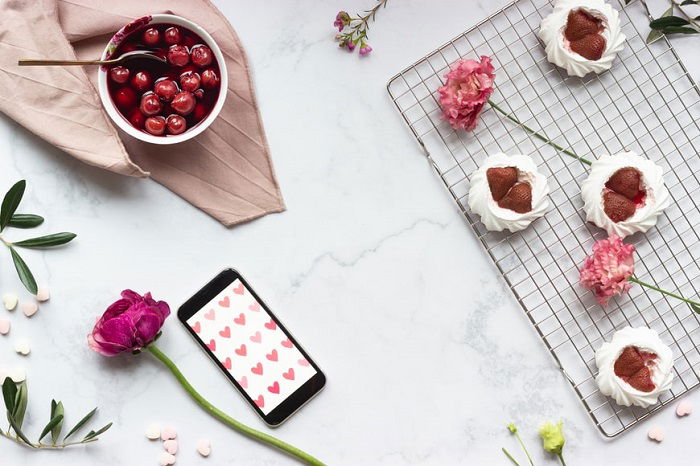
© Visual Stories – Micheile
1. Make Colors Pop With White Paper
White may seem a bit predictable, but it’s the perfect basis for a flat lay design. It gives you a clean space to work with and it makes the colors pop.
If you don’t have a plain white surface, use white paper or a card. You’ll be able to see creases if you use thin paper, so thick paper is better. And a big thick sheet will give you more stability to build on.
If you have spare sheets left over, you can use them as light reflectors to remove unwanted shadows.
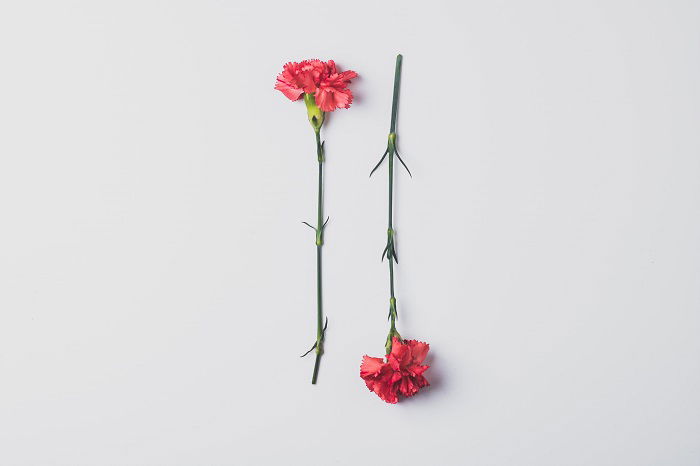
© Edward Howell
2. Change the Mood With Black Paper
Black paper will give your flat lays a different mood than a plain white background. Colors soften rather than pop on a black background. But it’s still a great background idea.
Black paper works well with baking and food photography. Flour and confectionery sugar really stand out on the dark surface. You can use them for texture or you can even write with them on your backdrops.
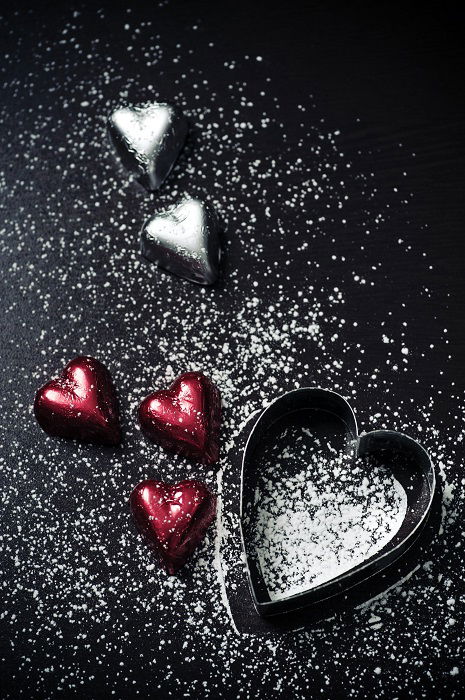
© Jasmine Waheed
3. Stack Sheets of Paper
If you want more texture and volume in your background, use many smaller sheets of paper. You can arrange them so they’re tightly packed or spread further apart.
Using older paper or pages from old books will give you a vintage feel. Thick art paper can also provide the same effect. It makes for a more antique scene.
Stacking sheets together will give you raised sections, on which you can place other objects.
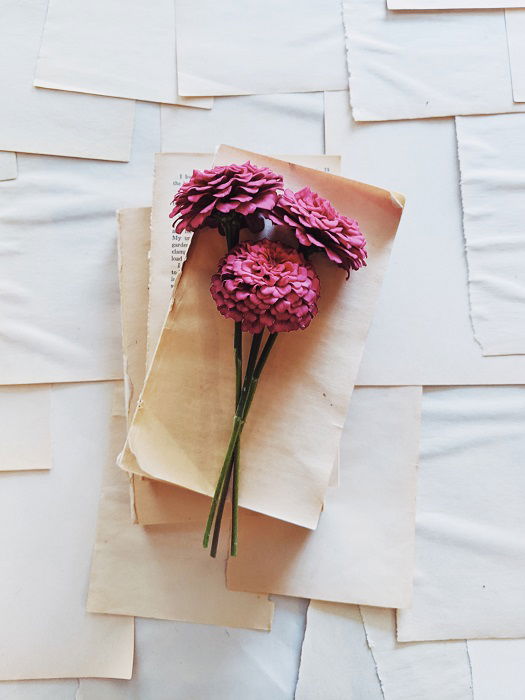
© Joyce McCown
4. Use the Colors of the Rainbow
Using colored paper gives you a vibrant workspace. You can select any color you like, and it gives an even flat color base. It makes bold and striking flat lay images.
When selecting your color, think about your theme and the objects you’re going to use. Thankfully, colored paper is inexpensive and easy to source. Try different colors to mix and match.
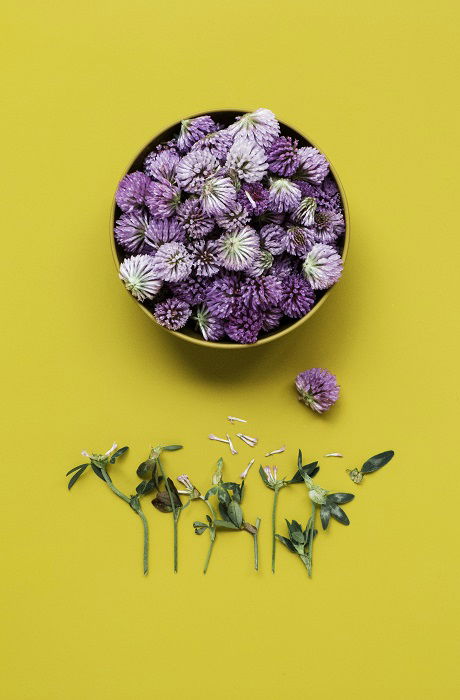
© Foodism 360
5. Use Different Colors Together
Colored paper is lightweight and easy to use, which means it’s easy to use more than one color in a single flat lay design.
Having two bold colors can make a flat lay image really pop. Think about which colors clash, and which ones complement. Think about your theme and what you’re trying to achieve.
Don’t use too many colors for the backdrops. Keep a minimalist approach to avoid busyness in your photos. And you don’t want to see the seams between the sheets.
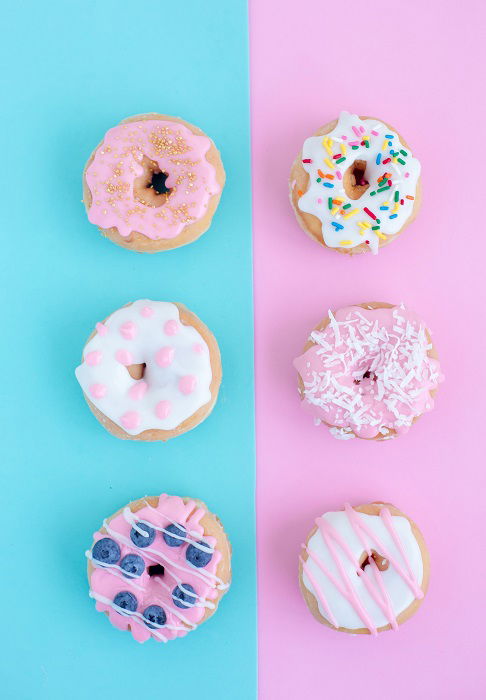
© Heather Ford
6. Repurpose Wrapping Paper
If you want a glossy flat lay background, wrapping paper is perfect. Lay it over a surface, place your items on top, and you have a flat lay that pops.
It’s a versatile option, as you can use themed papers for different occasions. Christmas is the perfect example. Using colorful Christmas paper creates a festive flat lay scene.
It can also be used to create birthday cards or adverts for birthdays cakes. Or simply use it for its glossy sheen.
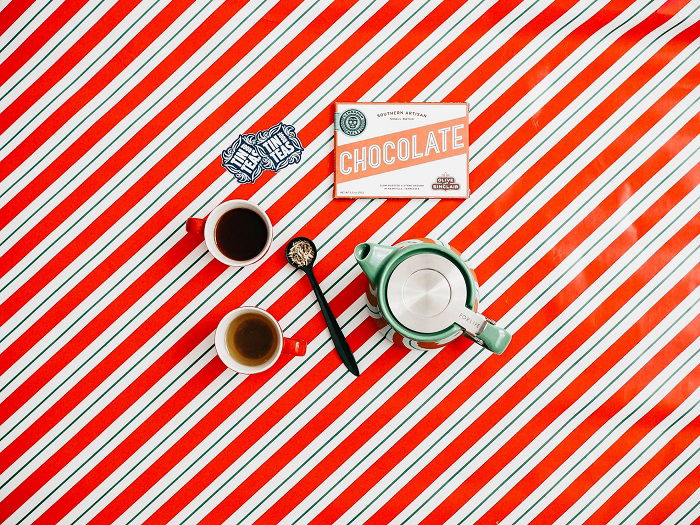
© The Creative Exchange
7. Add Texture by Using Canvas
Papers are excellent for giving you a pristine and matte space to work on. But what if you want something with a bit more texture?
To create backgrounds with canvas, spread it over a surface and place your items on top. You can stretch it tight or keep it loose to add more volume.
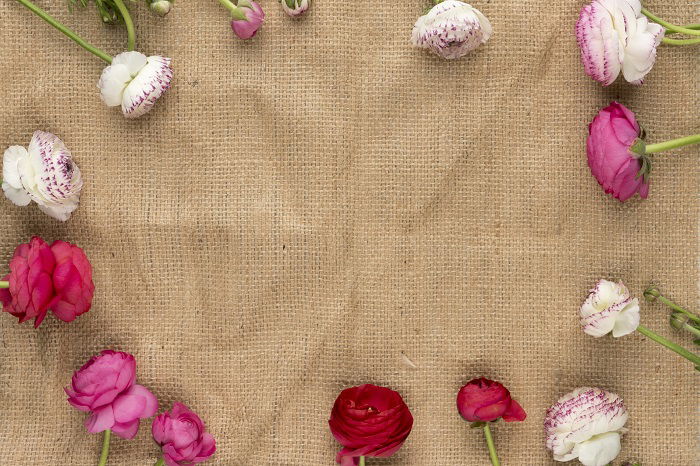
© Darren Nunis
8. Utilize Other Fabrics and Materials
If you don’t have any canvas, you can use any sheet of fabric or material. You can iron the fabric to have a soft, clean backdrop. Or you can leave creases to add more interest to your photo.
You can buy new sheets of fabric. Or a free alternative is to use sheets and blankets you already have at home.
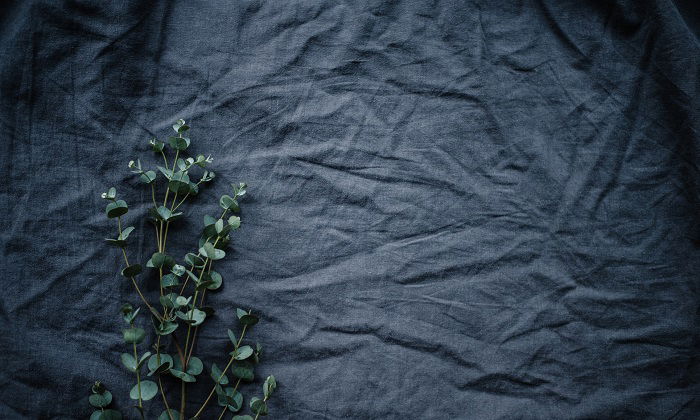
© Annie Spratt
9. Clothes Aren’t Just for Wearing
Using clothes for flat lay backgrounds can help your photos tell a story. Not only do thick jumpers and sweaters have excellent patterns, they also have a personal significance.
A jumper holds a lot of information in an image. A thick wool jumper tells us it’s autumn or winter. A Christmas sweater gives us a pretty good idea of what time of year it is.
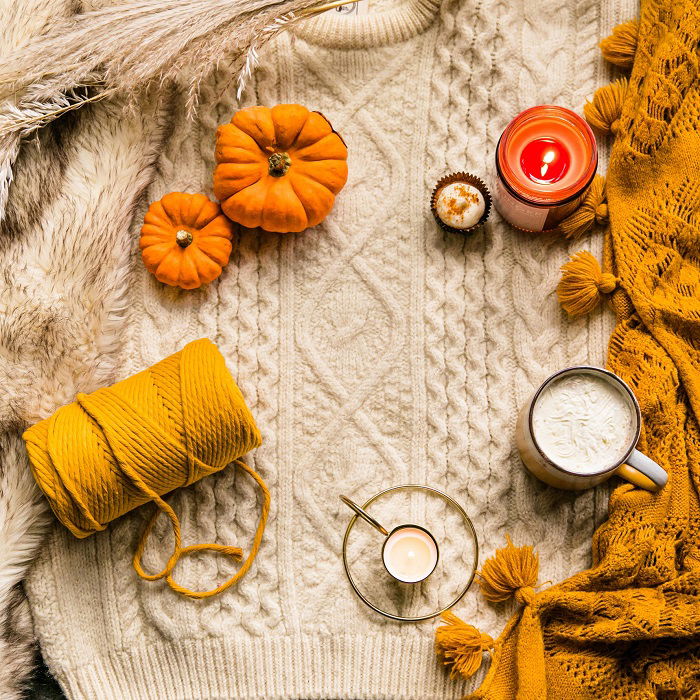
© That’s Her Business
10. Mark up a Chalk Board
Not only does a chalkboard give you an intense black, it allows you to draw and write on your backgrounds. You can make your photos personal and unique.
You can write words and phrases or make shapes and patterns. White chalk gives you a classic chalkboard look. But colored chalks are available too.
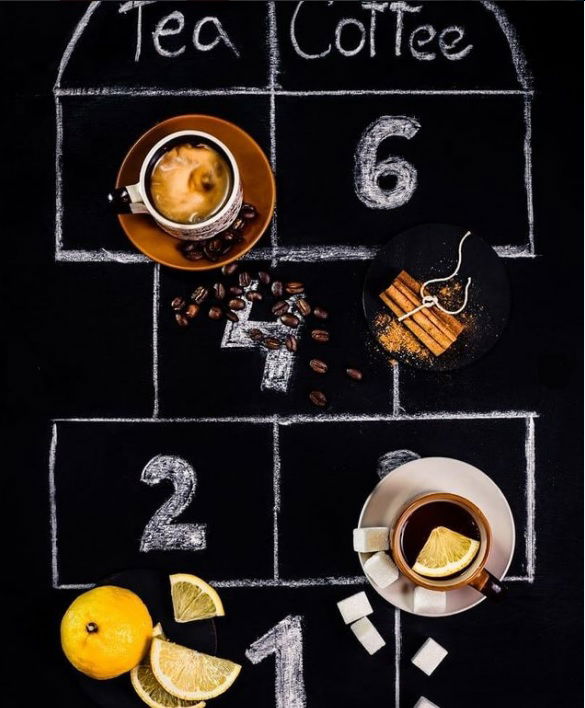
© Dina Belenko
11. Create a Rustic Feel With Wooden Surfaces
A wooden surface gives your flat lay photos a rustic feel. The pattern of wood grain gives the audience a sense of homely comfort.
You can use a tabletop or create a flat lay on the floorboards. If you have a deck, you can even take the shoot outside.
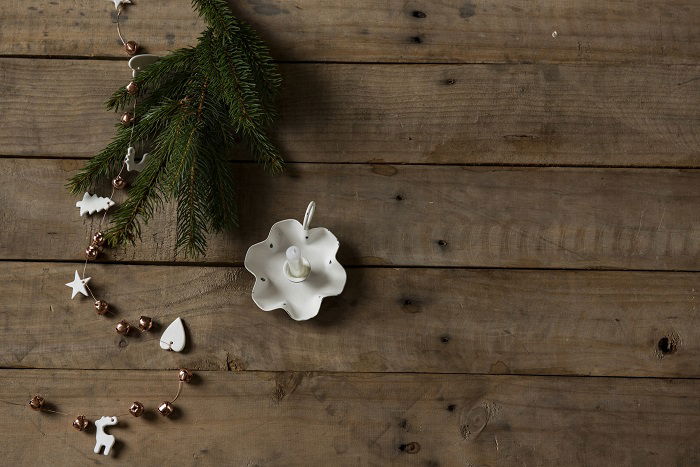
© Joanna Kosinska
12. Use Imitation Wood
If you don’t have any wooden surfaces in your house, you don’t need to search for planks of wood in the street. You can use imitation wood, such a vinyl floor strips or wallpaper.
Buying a few strips of vinyl or a roll of wallpaper is far cheaper than having your floors redone. And you can still get the same wood effect in your flat lay backgrounds.
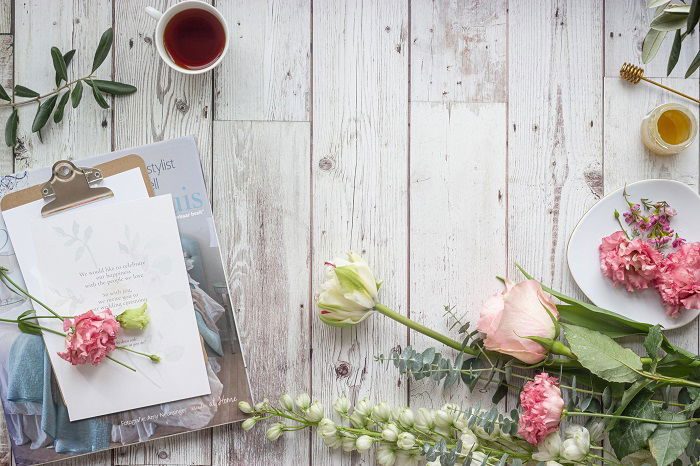
© Visual Stories – Micheile
13. Create a Fancy Flat Lay with Marble
If you have a marble surface in your house or studio, great. If not, you can still get great photos with imitation options.
A vinyl sheet with a marble effect will give you great backdrops for your flat lays. And your audience won’t be able to tell the difference.
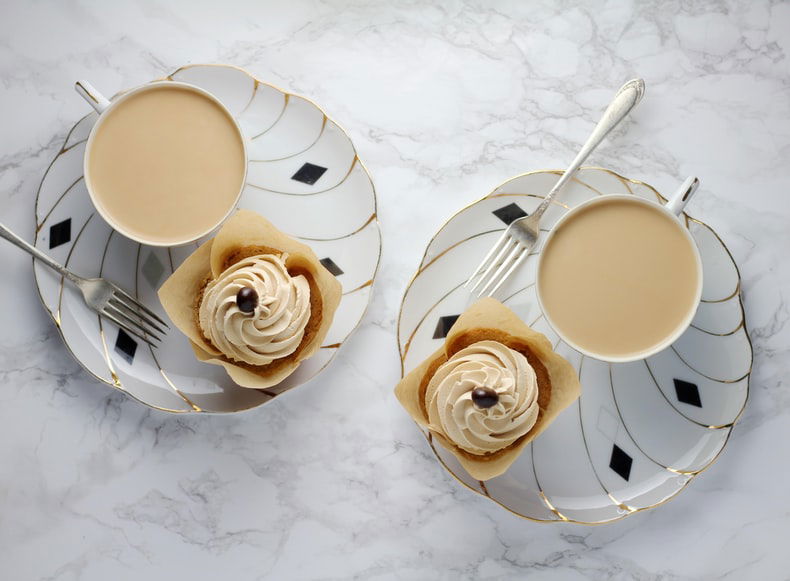
© Sheri Silver
14. Create a Worldly Feel by Using Maps
Maps make excellent flat lay backgrounds. You can use one large map, like a map of the world. Or you can use several smaller maps. The details will look great in your final photos.
Map backgrounds are perfect for travel photographers or influencers. The map itself implies that a voyage is taking place, and it tells a story in the images.
If you don’t have any maps at home, try an antique store or garage sale.
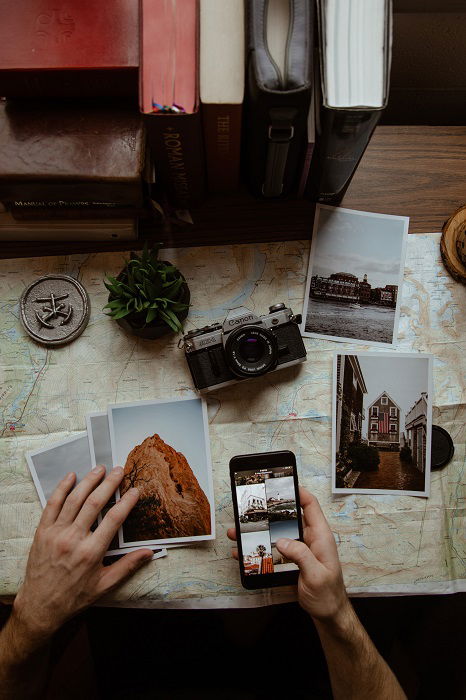
© Nik Guiney
Conclusion
There are so many ways you can create fun and interesting flat lay backgrounds. Start with something as simple as paper. Then develop your designs with different materials and surfaces.
You don’t have to spend big bucks on heavy slabs of marble. There are many cheap workarounds that still produce fabulous flat lay images.
Hopefully, this list of tips gives you the inspiration to create some fantastic flat lay backdrops and backgrounds.
Our Wow Factor Photography course is perfect for creating jaw-dropping images in the comfort of your own home!


